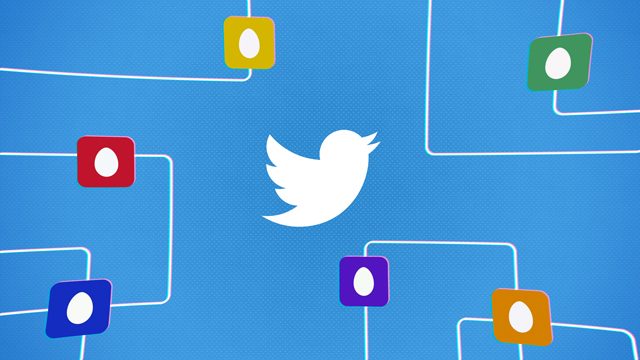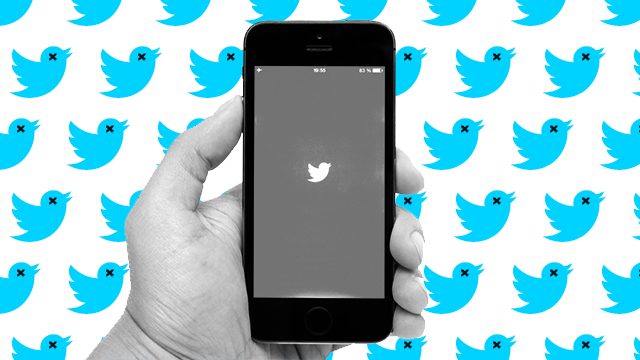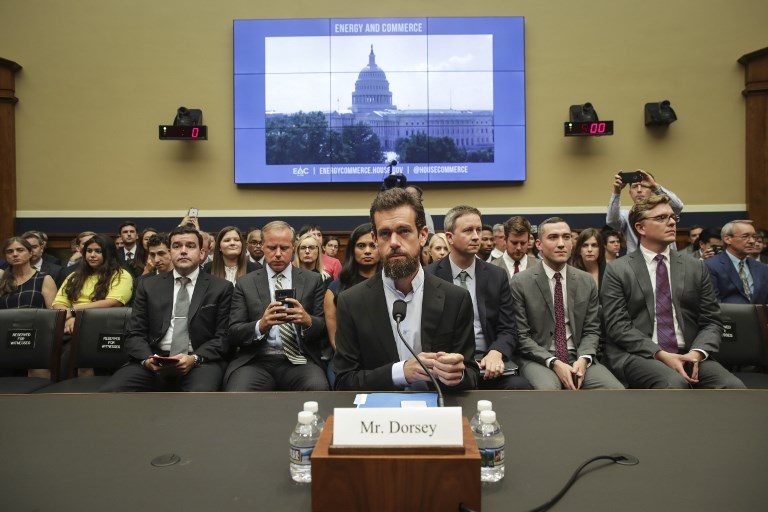SUMMARY
This is AI generated summarization, which may have errors. For context, always refer to the full article.

MANILA, Philippines – 2018 was a difficult year for social media companies like Twitter, Facebook, and Google, whose policies have been put under scrutiny following a slew of attacks on data privacy and threats to democracy.
According to independent watchdog organization Freedom House, online manipulation and disinformation tactics played a role in more than 18 countries’ elections from June 2016 to May 2017. This includes Russia’s involvement in the November 2016 US presidential elections.
The report also mentioned a “keyboard army” that supported President Rodrigo Duterte in the May 2016 elections and that continued to support him after.
Meanwhile, in March, it came to light that British political consulting firm Cambridge Analytica had improperly acquired the data of millions of Facebook users and used this information to help US President Donald Trump win his 2016 campaign.
The data of more than one million Filipinos was also improperly shared with Cambridge Analytica.
How did social media companies deal with these developments? Below, we take a look at Twitter’s 2018: what they did – good or bad – that may shape the future of social media and democracy.
Suspension of unwanted accounts
In response to reports that Russia had influenced the 2016 US elections, Twitter removed 128 million spammy, fake, dubious or inactive accounts during the periods of May to June and the last quarter of 2017.
In July, the company also swept “locked accounts,” which are accounts that could have been controlled by an actual human before, but it can’t be confirmed whether the original creator still has access or control over it.
The suspension of accounts led to a decrease in followers for high profile accounts and a dip in Twitter’s stock by 10%.
Curbing access to 143,000 apps

From April to July, Twitter removed 143,000 apps in order to decrease malicious activity from automated accounts.
Developers who want access to create a Twitter app must go through a new application process, detailing how they plan to use the app.
“We’re committed to providing access to our platform to developers whose products and services make Twitter a better place,” said Twitter senior product management director Rob Johnson.
“However, recognizing the challenges facing Twitter and the public – from spam and malicious automation to surveillance and invasions of privacy – we’re taking additional steps to ensure that our developer platform works in service of the overall health of conversation on Twitter.”
Suspending Alex Jones
After garnering criticism for not banning right-wing conspiracy theorist Alex Jones like Facebook, YouTube, Spotify, Apple and others did earlier, Twitter banned Jones in September for violating their abusive behavior policies.
They also banned Infowars, Jones’ conspiracy theory website.
“We took this action based on new reports of Tweets and videos posted yesterday that violate our abusive behavior policy, in addition to the accounts’ past violations,” they said in a tweet.
Today, we permanently suspended @realalexjones and @infowars from Twitter and Periscope. We took this action based on new reports of Tweets and videos posted yesterday that violate our abusive behavior policy, in addition to the accounts’ past violations. https://t.co/gckzUAV8GL
— Twitter Safety (@TwitterSafety) September 6, 2018
Jack Dorsey’s talks with US lawmakers

There are 4 significant events wherein Twitter CEO Jack Dorsey spoke to US lawmakers this year.
In his first visit to Congress in May, Dorsey was asked to testify before Congress as part of their probe on the country’s tech companies. In June, he hosted a private dinner with Republican leaders and conservative commentators in Washington, where he defended Twitter from accusations that the platform targeted right-leaning users.
Dorsey later joined Facebook’s Sheryl Sandberg at a Congress hearing in September, wherein lawmakers expressed doubts that the social media platforms were prepared for the upcoming midterm elections, and complained about fake videos, the need to protect privacy, and combat hacking.
Right after that hearing, Dorsey faced Congress again, this time sans Sandberg, where he discussed his network’s algorithms, how they have to rethink the incentives that they reward users with, and the way it moderates content against the backdrop of perceived bias against conservative views.
Twitter’s CEO admitted they were unprepared for disinformation campaigns and propaganda, but are now committed to making the necessary changes.
“Required changes won’t be fast or easy,” he said. “Today we’re committing to the people and this committee to do it openly.”
Twitter asks for users help to ban ‘dehumanizing’ content
The social media platform reached out to their users later in September, asking them to help craft the ban on comments that dehumanize people.
The ban was part of Twitter’s initiative to broaden restrictions on hateful content that dehumanizes people based on race, religion, sexual orientation or other social grouping.
“We want your feedback to ensure we consider global perspectives and how this policy may impact different communities and cultures,” Vijaya Gadde and Del Harvey of the Twitter trust and safety team said in a blog post.
Twitter and the US midterm elections
For the US midterm elections, Twitter launched “US election labels” in May, which identify candidates running for state Governor, or for the US Senate or US House of Representatives. The label, which showed up on the candidate’s profile page and on tweets sent and retweeted by their account, contained information on the office the candidate was running for, the state that office was in, and when applicable, the district number.
They also deleted thousands of accounts in September and October that were encouraging people not to attend the midterm elections on November 6.
“For the election this year we have established open lines of communication and direct, easy escalation paths for state election officials, DHS (Department of Homeland Security), and campaign organizations from both major parties,” Twitter said in a statement.
They said that the network of accounts operated from outside the US, but didn’t provide details on how they worked.
In 2018, Twitter cleaned up spammy accounts, banned accounts that were violating their terms and conditions, and spoke to users and legislators on possible steps forward – do you think this was enough? What do you think Twitter should work on in 2019? Let us know your thoughts in the comments below! – Rappler.com
Add a comment
How does this make you feel?
There are no comments yet. Add your comment to start the conversation.